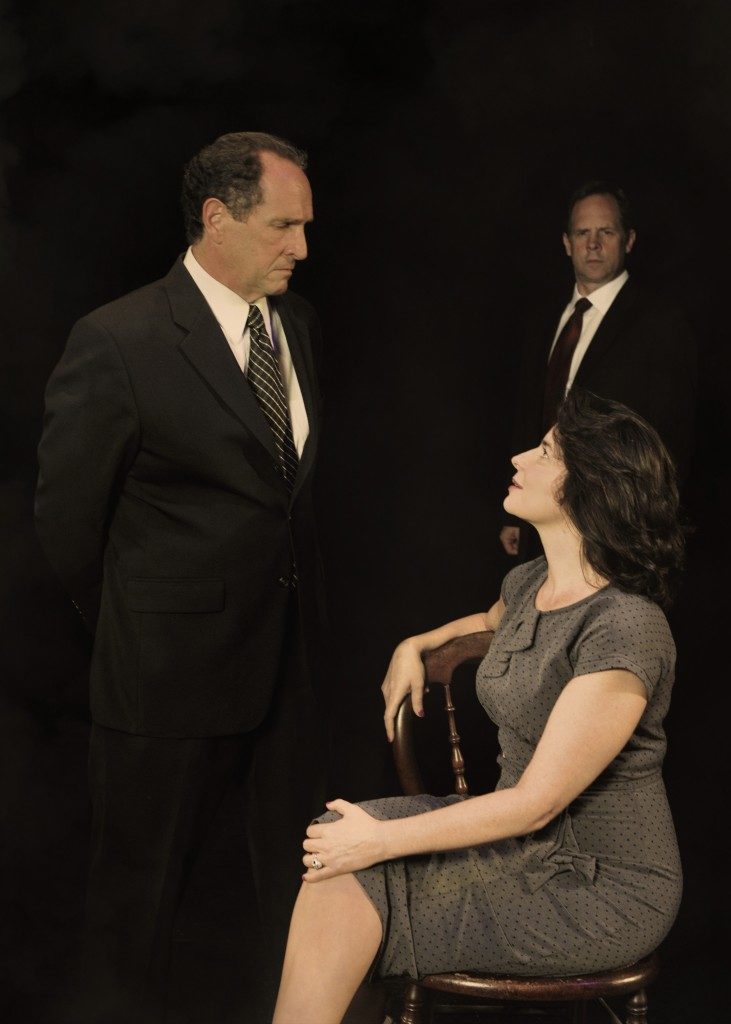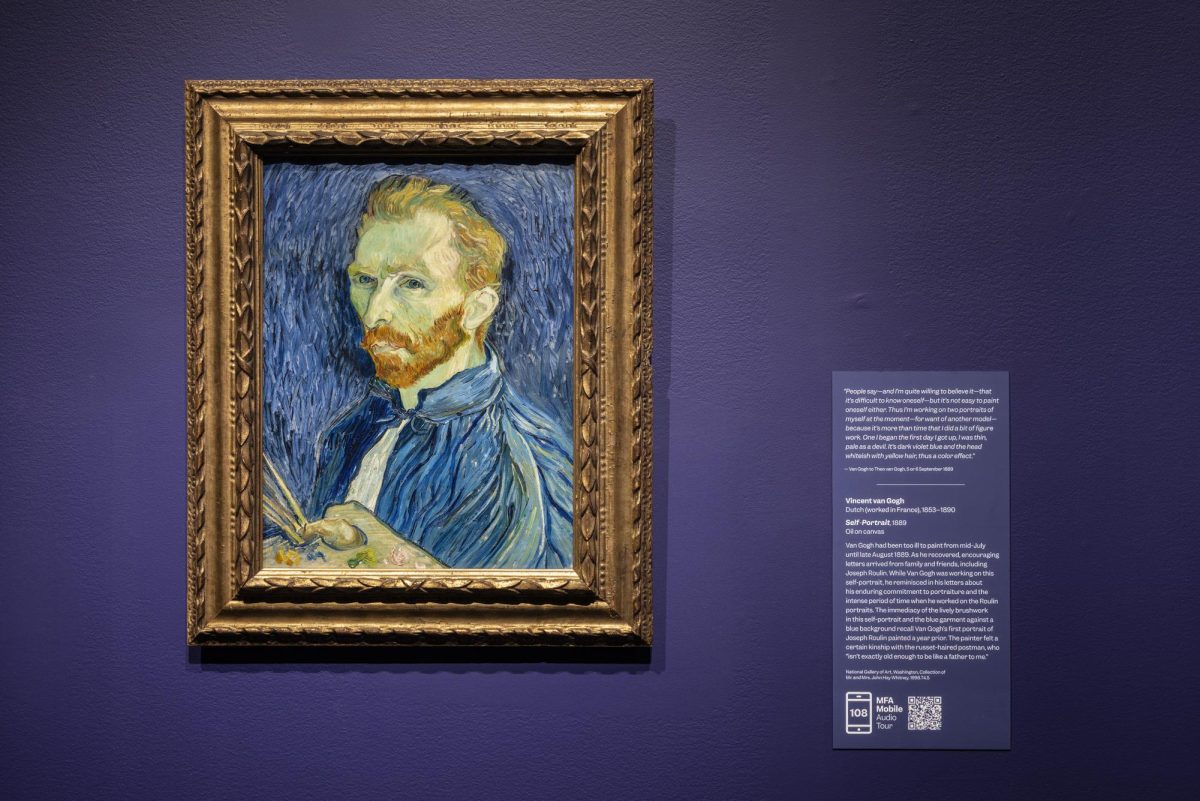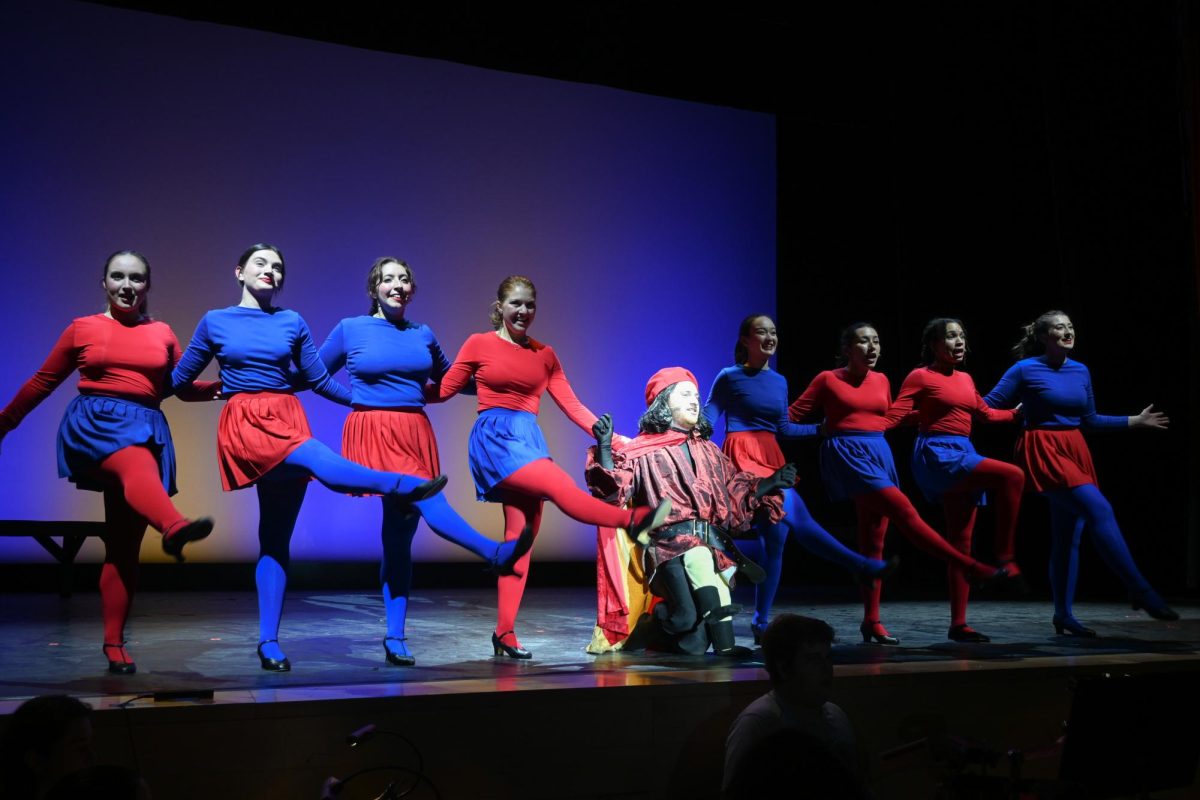By Liam Hofmeister, inside editor
He dragged his paralyzed wife out of her wheelchair and screamed, “What are you doing?” Her legshung limp and she collapsed onto the ground, weeping.
The scene was shocking, but effective. Audience members gasped at what they saw.
On Saturday, Sept. 5, New Repertory Theatre’s production of Arthur Miller’s “Broken Glass” began previews. About 350 attendees packed into the Arsenal Center for the Arts in Watertown for the Boston–area premiere of one of Miller’s later plays.
“The acting was first rate, and the set design was cleverly efficient,” said an audience member who preferred to remain anonymous.
Set in the late 1930s, “Broken Glass” centers on Sylvia Gellburg, a Jewish woman who becomes paralyzed after reading about Kristallnacht. Translated as “The Night of Broken Glass,” Kristallnacht was a ferocious German attack against Jewish civilians carried out on Nov. 9, 1938. Phillip Gellburg, Sylvia’s husband, seeks help for his wife from Harry Hyman, a doctor interested in Sylvia’s psychosomatic condition. As the plot develops, it is revealed that there may be greater stressors between Sylvia and her husband that have caused her paralysis.
Miller’s images in “Broken Glass” came across powerfully. The audience gasped in shock to hear of an incident when Phillip slapped Sylvia in the face with a cooked steak. At one point after failing to move her legs, Sylvia struggles to pull her useless limbs into the fetal position to find some catharsis. This left the crowd silent.
Jeremiah Kissel played Phillip, and though Kissel mumbled some of his lines, he clearly demonstrated his character’s devotion to his wife. Anne Gottlieb played Sylvia with a longing for both physical and emotional liberation, and Benjamin Evett brought great empathy to the role of Hyman.
Artistic director for New Repertory Theatre Jim Petosa directed “Broken Glass” with close attention to detail. At all times, Sylvia’s newspapers about Kristallnacht were on stage, demonstrating the omnipresent threat of persecution that Jews faced in the 1930s.
Petosa used a spinning platform for the set changes. Characters walked counterclockwise as the ground rotated clockwise, keeping actors walking in place and allowing the audience to see the moments before action began. Sets remained on stage the entirety of the show putting full focus on characters instead of breaks during scene changes.
Glass windows lined the back of the stage as a tool for lighting designers. Lights guided focus downstage right using the shadow of a window frame. Blue, purple and red hues enveloped the stage during scene changes to match character’s emotions and to establish the time of day.
Music also helped segue between episodes. A strident violin played in between scenes to match the tension between characters, and whenever drama reached a peak an audio track of glass breaking rang throughout the theater.
One of the play’s greatest undertones was identity. Phillip rejects his Jewish roots in the play, leaving Sylvia in dismay at his apathy toward their people’s torture.
This is the first play of New Repertory Theatre’s “Identity… a diverse season of work that examines characters who are challenged by circumstance… and seek to identify who they are,” according to the playbill.
“It’s timely, especially after having seen the history of Eastern Europe,” said Kathy Hearn, aBoston theatregoer. “Look at what’s happening there now. It’s always important to look at these different perspectives.”
“Broken Glass” will be playing until Sept. 27.
Photos courtesy of Christopher McKenzie









